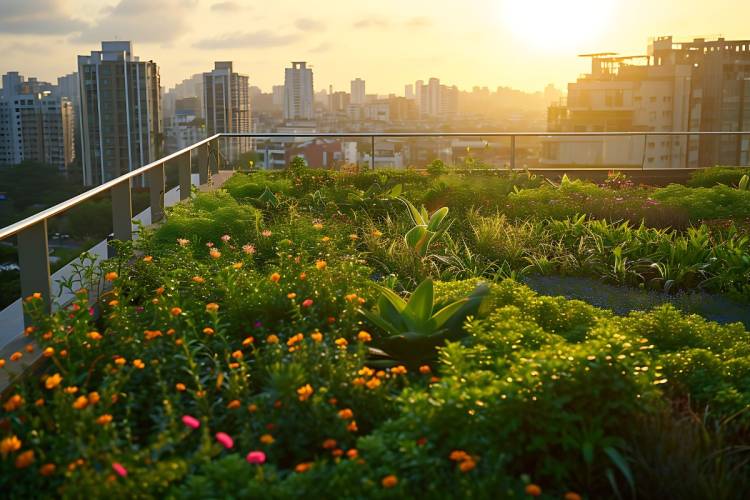How to contribute to improving urban biodiversity?
We explain what urban biodiversity is, its importance and its benefits. Discover measures to maintain ecological balance in urban environments.
IT’S ECO, IT’S LOGICAL
Share

The constant hustle and bustle of cities often disconnects us from nature. However, despite this apparent separation, urban areas can play a crucial role in biodiversity conservation if we all do our bit. Cities are active ecosystems and could offer opportunities to protect and nurture wildlife. Why not? Here are some ideas on how to contribute to biodiversity from home.
What is the biodiversity?
Biodiversity is the variety of living organisms in a given place and includes living things, from microorganisms such as bacteria and fungi to plants, animals and humans. This biological diversity provides several fundamental benefits to humans, such as food production, medicine, climate regulation, crop pollination, nutrient cycling, and water and air purification, among others.

The importance of urban biodiversity
Biodiversity in cities is essential for the quality of life of city dwellers and balanced ecosystems. By adopting sustainable practices and creating nature-friendly environments, cities can become engines of conservation, fostering the harmonious coexistence of urban life and biodiversity. We can all play a vital role in this mission, every action counts.
Measures to enhance domestic biodiversity
1. Create green spaces:
- Community gardens and urban parks. These spaces can become vital refuges for insects, birds and small mammals. Planting local species and creating specific habitats, such as butterfly areas or bee shelters, promotes local biodiversity.
- Green roofs and vertical gardens. Transforming rooftops and walls into green areas not only improves air quality and reduces temperatures, but also provides an attractive environment for plants and animals, thus contributing to urban biodiversity.
2. Conserve local flora and fauna:
- Promote local species: Planting local species promotes healthy ecosystems and provides food and shelter for local wildlife. Invasive species that could displace local species should be avoided.
- Urban animal shelters: Installing nesting boxes, water troughs or bird feeders can attract different species and help maintain healthy populations in urban areas, provided they are controlled.
3. Reducing our environmental impact:
- Sustainable waste management: Recycling, reducing and reusing are key actions to minimise our environmental impact in cities. In addition, proper waste management prevents pollutants from affecting biodiversity.
- Responsible use of resources: Promoting energy efficiency, reducing water consumption and choosing sustainable means of transport helps to preserve natural ecosystems outside the city.
4. Education and participation:
- Environmental awareness and education: It’s important to encourage the organisation of and participation in workshops, talks and activities that educate the community about the importance of biodiversity and how each individual can contribute.
- Citizen participation: Involving citizens in volunteer programmes, such as cleaning up urban natural areas or environmental restoration projects, strengthens the link between the community and environmental conservation.







